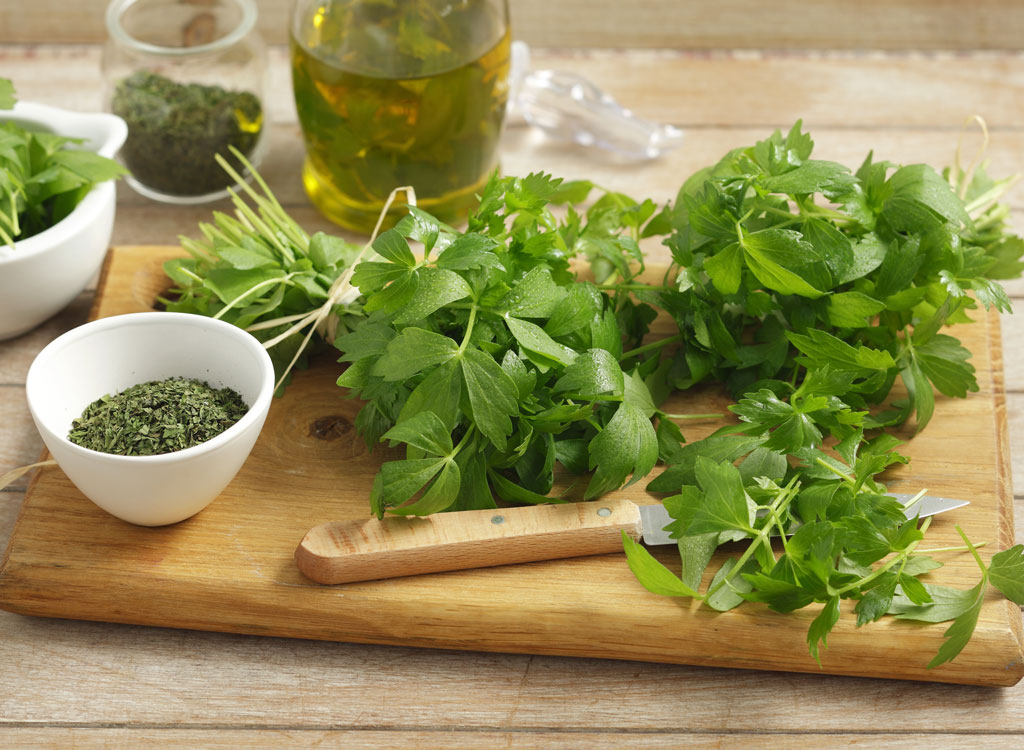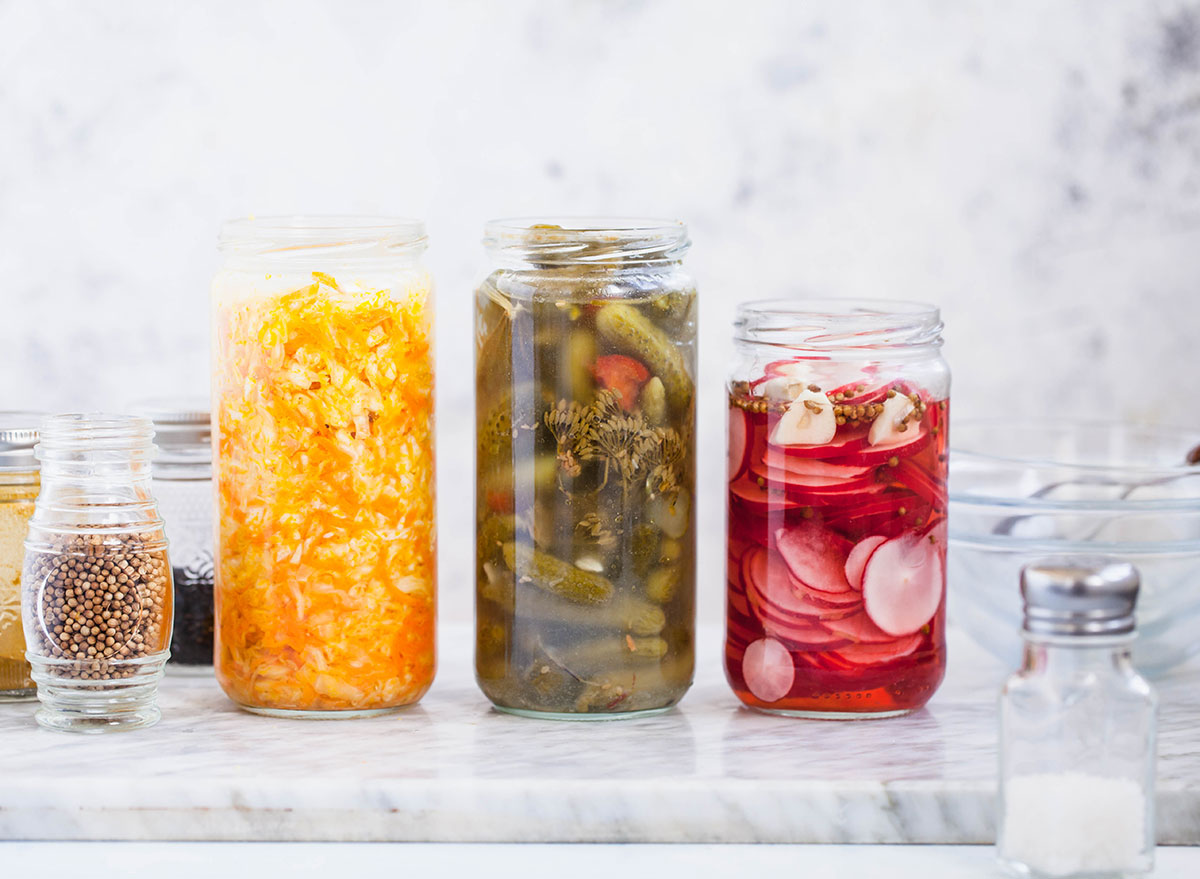20 Food Scraps You Should Stockpile in Your Fridge and Freezer

The rind from that cheese platter you made last week. The bones from the baked chicken thighs you ate for dinner yesterday. The peel from an orange you squeezed for a morning cup of juice. No, the common thread here isn’t that these items are trash! It’s that these food scraps can be saved and repurposed for plenty of different recipes.
Whether you save a rind in a freezer or pack away your lemon zest for a future recipe, there are countless reasons to save these food scraps, rather than throwing them away. Here are some common food scraps to save, as well as some examples of what you can make with them.
Carrot Pulp

If you’re juicing carrots, don’t toss the pulp that you don’t use! It’s great in a variety of recipes.
“Carrot pulp from juicing is wonderful to use in carrot cake or in my carrot cake pancakes,” says Yumna Jawad of Feel Good Foodie. “Just dry it out with a paper towel before using.”
Chicken Bones

Did last night’s dinner include chicken drumsticks or bone-in thighs? Don’t toss those bones in the garbage! You can use them to make homemade chicken stock—and it will be way better than a store-bought version. Just boil the bones, along with the herbs of your choice, and then reduce the water to a simmer. When it’s done, you’ll have a flavorful base for soups or stews. (Don’t forget to take the bones out before adding the rest of your ingredients!)
Cheese Rinds

Did you buy a slice (or wheel) of Parmesan cheese and finish it off? You’ll want to save the rind! Cheese rinds make for delicious stocks. You can throw them in with chicken bones to make cheesy chicken stock, or cook them on their own for a base for vegetarian soups.
Herb Stems

Did you strip the leaves off of an herb to use in a recipe? You can still get some flavor out of the stems, too! “Herb stems add great flavor when making homemade broth, like for using in my chicken noodle soup recipe,” Jawad says. “In fact, the entire broth is made up of scraps of outer layers of onions, carrots, and celery leaves.” What a delicious way to prevent food waste!
Coffee Grounds

No, we’re not suggesting you cook with used coffee grounds. But they’re great for cleaning! A bowl of coffee grounds can help neutralize odor in your fridge or kitchen garbage can.
Squash Seeds

You’ve tried roasted pumpkin seeds, but what about squash seeds? This vegetable is delicious year-round, and the seeds are just as great for roasting. For an easy way to scoop the guts and seeds from squash, check out this video from chef Joel Gamoran, star of A&E’s Scraps.
Fruit Peels

Citrus zest can add a delicious kick to plenty of baking recipes. Even if you’re not using the zest right away, it’s worth zesting your peels and keeping the extra in the freezer for when you need it. Orange zest is even good in chocolate chip cookies!
Almond Pulp

Making almond milk at home? You can still use the mushy pulp that’s leftover afterward. It’s great for making almond-based desserts like cookies, and you can even use it to make almond butter. How’s that for preventing food waste?
Broccoli Stalks

The crown might be the most popular part of the broccoli plant, but you can use the stems and leaves in your recipes, too! Broccoli stalks are a good source of fiber, and they can be just as delicious in recipes as broccoli crowns! Slice broccoli stems for a stir fry, or eat them raw with a healthy dipping sauce.
Watermelon Seeds

No, you won’t grow watermelons in your stomach if you eat watermelon seeds. In fact, they have several nutritional benefits and are good sources of magnesium. Try roasting watermelon seeds with lime juice and a hint of chili powder.
Kiwi Skins

While you might not want to bite into the fuzzy part of a kiwi, there’s a great use for the skins when you’re done eating the fruit. Like pineapple, kiwi is great for tenderizing meat. Try rubbing kiwi skins on raw steak to start the tenderization process before you put the meat on the grill.
Pickle Juice

When you’ve eaten the last pickle slices from the jar, don’t pour the juice down the drain! You can use it to flavor tuna salad or to pickle other vegetables. (Or use it to make a pickleback shot—we won’t judge!)
Peanut Butter Jars

“Don’t toss empty jars of peanut butter with peanut butter on the walls of the emptied jar. It makes a great vessel for making overnight oats,” Jawad says. “Once you add the oats, milk, and other ingredients, it becomes really easy to stir the peanut butter into the overnight oats and give them great flavor!”
Onion Skins and Vegetable Tops

Chopping veggies for your next meal? Don’t toss all the parts you aren’t using into your trash can. You can use various stems and skins to make a delicious vegetable stock, and it’s easy to strain them out after you use them. Another idea is to use onion skins and garlic paper to flavor olive oil, as Chef Gamoran suggests.
Yogurt and Milk

If it’s getting close to the expiration date for your gallon or milk or tub of yogurt, don’t worry! You can freeze dairy for use in recipes later on. With yogurt, freezing it in an ice cube tray and using the cubes in smoothie recipes is a simple way to eliminate food waste.
Avocado Pits

No, we don’t recommend you try eating these. But the avocado pit has a surprising use! “Instead of throwing it out, store the avocado pit in a jar with the guacamole,” Lauren Greutman, frugal living expert and author of The Recovering Spender, previously told Eat This, Not That. “It will keep it from turning brown, and can even help store-bought varieties maintain their color longer.”
Veggie Cooking Water

Maybe you’ve used reserved pasta water in recipes like cacio e pepe. But veggie cooking water can have a second life, too! If you boil vegetables, some of the nutrients could escape the veggies and into the water, so you don’t want to pour them down the drain. Instead, use the water as a soup base for an easy, flavorful meal.
Watermelon Rind

Yes, we already told you to roast the seeds—but you can eat the watermelon rind, too! Chef Gamoran has a watermelon rind salsa recipe that you’ll have to try to believe; the key is pickling the watermelon rinds.
Cauliflower Leaves

If you haven’t tried roasted cauliflower leaves, you should give them a try! Try cooking them with olive oil, salt, and pepper for a light, refreshing snack or side dish.
Apple Peels

You eat the peel of an apple when you chomp into it raw, so why toss all the apple peels that come from making an apple pie? Try roasting these apple peels for a healthy, easy snack.








